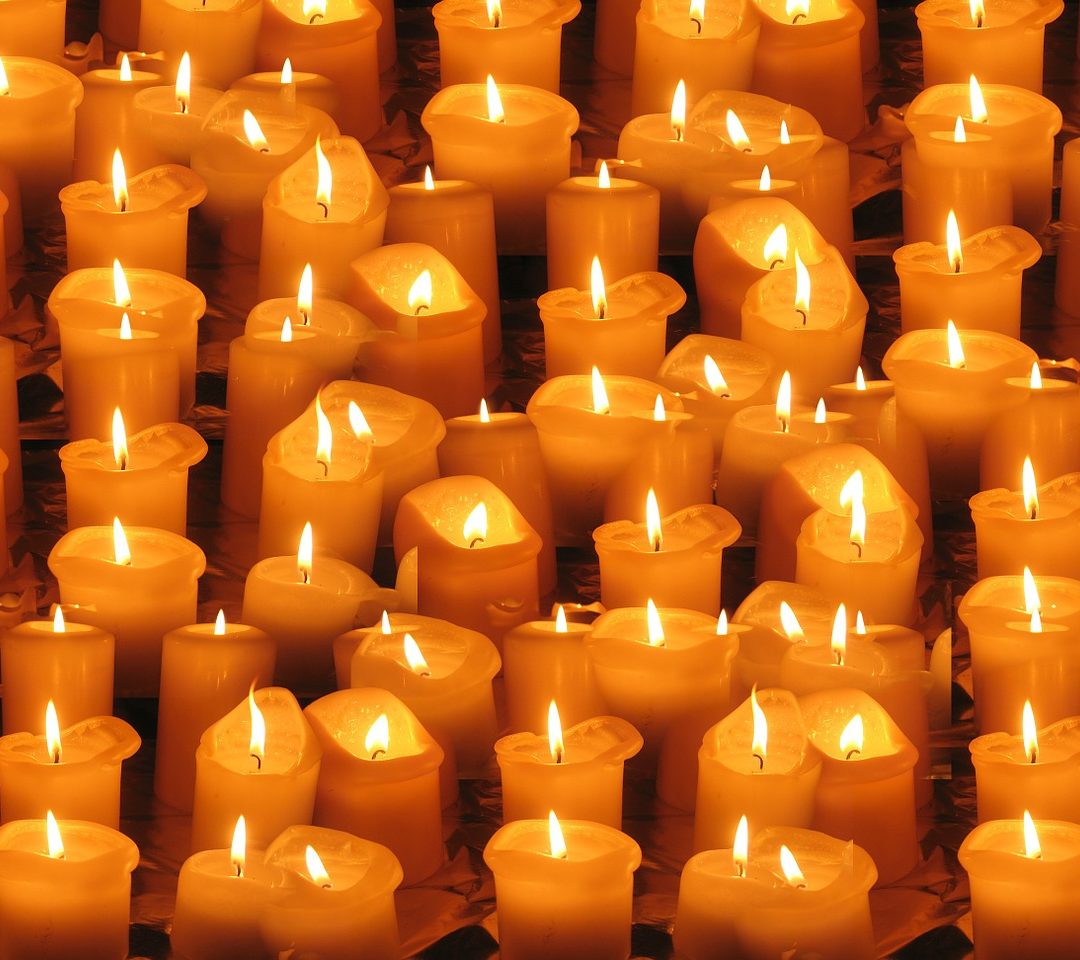
by Somya Devi | Oct 26, 2016 | Astrology, Conjunctions, Events, Holy Days
New Moon in Swati
Be careful not to become scattered this New Moon in Swati, on the dark night of Saturday, October 29th (*Times given for North America).
The Sun and Moon will coincide in this Vedic star-sign ruled by Vayu, the Lord of Wind, to kick off the next lunar cycle. The exact conjunction will be Sunday morning (at 10:38 a.m. PDT), with the darkest Moon phase on Saturday night. It will also coincide with a Venus-Saturn planetary war (exact conjunction), so we may feel a conflict between temporary pleasures and long-term goals (October 28-30). Thankfully, this dark Moon night also marks the time for celebrating Diwali (or Deepawali), the festival of light, wherein we celebrate prosperity and light prevailing over darkness! So it’s a great time to shine some light and turn our minds and hearts toward devotional practice.
Potential Depletion
There are a few factors creating the potential to feel scattered at this time, but there’s also a great opportunity to ground ourselves and steady our minds through focus and worship. In addition to Vayu’s influence, we in the Northern Hemisphere have been experiencing the cold winds increasing in the external atmosphere. As we go deeper into autumn, the vata dosha (comprised of air and ether elements) is increasing all around us. With the leaves falling and the weather changing, the process of decrease and sparsity in nature becomes evident. This results in an increase of vata energy, which can cause us to feel restless, anxious, spacey, dry, or depleted. It is extra important to do grounding and nourishing practices during this season, and to eat warm, moist, and heavier foods.***
What’s more, this lunar cycle begins with the Sun and Moon in Libra, where Sun is considered debilitated (not able to express strongly). Sun represents our vitality, energy, physical strength, and also our feeling of spiritual strength and connection with universal source. Not surprisingly, the time of year when he becomes “debilitated,” passing through Libra, is the same time we experience increased vata in the atmosphere and lessened immunity in our systems. It’s the time when we are most likely to catch a cold and begin to feel “spread thin” or “dried out.” While the Sun is in Libra, self-care is extra important. Take some time on this New Moon night to set intentions for how you will care for yourself during the coming cycle.
Another reason Sun is considered debilitated in Libra is because Libra is a sign that is very much about relationships. Sun represents our individual strength, so with Sun in Libra, we are more likely to put more of our attention on others, and on relationships, than towards our own physical health. We may be relating to our own personal power through our relationships during this time, rather than approaching it as individuals. While you are offering your love and compassion to others, don’t forget to nourish the divine within yourself as well, or you may end up feeling depleted. It is also easy to become drained when we try too hard to balance everything, another temptation of Sun in Libra.
Swati Symbolism
Thankfully, the divine universe always seems to offer just the right opportunities for solving the same challenges it presents. We just need to be willing to do the work on ourselves. This new Moon is in the part of Libra known as Swati, “the independent one,” which reminds us of our independent nature, despite the strong emphasis we may be putting on relationships at the moment. This star-sign helps remind us to look for our own inherent power, shining forth like the inner Sun.
Vayu, the wind god, is the ruler of Swati, and can bring in a restless and scattered energy to this star. He is also the father of Lord Hanuman, who is known as the greatest devotee. One lesson we learn from Hanuman is that through loving devotion, even a restless monkey mind can be tamed. He had endless devotion for Lord Rama, which gave him invincible powers to accomplish seemingly impossible tasks. Though we all have restless monkey minds at times, if we direct our attention toward love, light, or our chosen deity, we will be able to steady the mind and find immense strength within.
Practice Ideas
Some ways to still your mind through one-pointed focus include:
- Mantra recitation
- Asana practice
- Scriptural study
- Meditation on candlelight, a statue, or an image
Though a young sprout blowing in the wind (a symbol of Swati) may seem perilous, it is actually growing stronger so as to withstand the intense force of the outer circumstances. Eventually, it could grow into a tall redwood, cutting through the wind like a sword (another symbol of Swati). Swati is also related to the symbolism of a priest, which shows us the possibility for reclaiming both power and balance through devotional or spiritual practice.
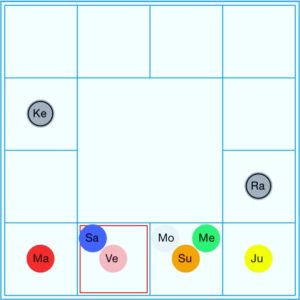 Kala Saarpa Yoga
Kala Saarpa Yoga
We may feel extra intensity seemingly out of nowhere, for the next two weeks during which the planets align in a Kala Saarpa yoga. This means that the seven major planets are all in between Rahu and Ketu, the two lunar nodes. This heavy alignment can bring up a lot of shadow work, so it is a good time to engage your toolbox for self-development. With Ketu in Shatabisha, the sign of the “hundred medicines,” alternative medicines and healing modalities can be useful towards this end.
Diwali
With all this energy in the atmosphere, enjoy the opportunity for worship offered by the advent of Diwali! This Hindu festival of light is celebrated for 6 or 7 days, with the main Diwali festival on the night of October 29th. Diwali, or Deepawali, comes from Deepa + avali, “a row of lights.”
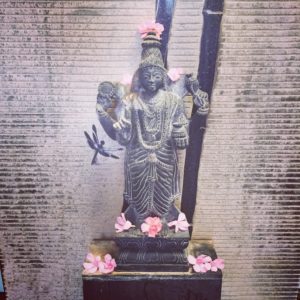 Thursday (North America) is both Dhanvantari Tryodashi (or Dhanvantari Jayanti, the birth of Lord Dhanvantari), and Dhanteras (a part of the Diwali festival). It is the thirteenth day of the waning Moon in the Vedic month of Ashwayuja. Lord Dhanvantari is known as the “father of Ayurveda” and the “physician of the Gods.” (Ayurveda is the system of natural medicine from India that is a sister science to yoga and Jyotish.) If you practice any healing tradition, especially Ayurveda, this is a good day to give thanks and call in auspicious blessings to your healing path or practice.
Thursday (North America) is both Dhanvantari Tryodashi (or Dhanvantari Jayanti, the birth of Lord Dhanvantari), and Dhanteras (a part of the Diwali festival). It is the thirteenth day of the waning Moon in the Vedic month of Ashwayuja. Lord Dhanvantari is known as the “father of Ayurveda” and the “physician of the Gods.” (Ayurveda is the system of natural medicine from India that is a sister science to yoga and Jyotish.) If you practice any healing tradition, especially Ayurveda, this is a good day to give thanks and call in auspicious blessings to your healing path or practice.
Thursday also marks Dhanteras, the first day of the Diwali festival (the Hindu festival of light). It commemorates the day that Lakshmi emerged from the milk ocean. In India, it is customary to purchase metals on this day — anything from jewelry to new statues to kitchenware (excluding iron), as a part of celebrating Lakshmi and calling in more prosperity. The metals can then be offered to your altar and will absorb and amplify the benefits of worship performed over the few days of Diwali.
It is customary to perform a puja to Lakshmi on the third night of Diwali (this Saturday in North America). Goddess Lakshmi represents wealth and prosperity (spiritual and material), as well as devotion, love, beauty, and happiness. Celebrating her on Diwali is a way to call these qualities into our lives.
It is also traditional to light candles throughout Diwali, to remind us of the divine light within. Diwali is also related to the story from the Ramayana about Lord Rama’s return from exile after fourteen years. It thus symbolizes light and goodness emerging from times of darkness. Lord Rama represents dharma, or doing our duty, as well as devotion, compassion, courage, and righteous leadership. Diwali celebrations often commemorate his and Sita’s return to the kingdom of Ayodhya after their exile.
On Saturday night as we prepare to enter the next lunar cycle, light a candle! Turn your mind toward the divine so as to focus and ground, through the practices that work best for you. Set some intentions as to how you will practice self-care during this cycle (and be sure to find me on Facebook for a live chat with tips for how to do this!).
Ram Ram, Namaste
***Be sure to Follow me on Facebook so you can tune in for my upcoming Facebook Live talks about the New Moon AND Ayurvedic tips for how to stay balanced during the high vata season!
**Limited requests for personal Vedic Astrology readings before the New Year are now available Here.
Save
Save
Save
Save

by Somya Devi | Sep 26, 2016 | Astrology, Events, Holy Days
Maha Navaratri 2016 will be from October 1st-10th, the first ten days of this new lunar cycle. In this important Hindu holiday, we celebrate the Goddess through “the great nine nights.” Goddess, Devi, Shakti, Durga, Divine Mother, the many names and forms all represent the dynamic and fluid feminine power that enlivens all of existence.
She is the creatrix, the warrioress, the nurturer, the purifyer, the protector. While she’s in the innocent and fertile maiden so is she the wise and learned crone. Both the nurturing mother, and the one who gives “tough love.” The impassioned lover, the devoted bhakta, the disciplined yogini. We see Goddess appear through us in innumerable manifestations. Through her many forms she teaches us and offers us countless blessings–love, compassion, courage, learning, discipline, surrender, success, enlightenment, and bliss. This festival is a time for celebrating the supreme feminine power in all her glory, and the many blessings she bestows upon us.
As with most Hindu celebrations, this festival correlates with the lunar calendar, and thus begins on the first day of the waxing Moon after the New Moon of September 30th. The celebration is through the “nine nights” of October 1-9, 2016, and into the tenth morning known as Vijayadashami, “the day of victory,” on October 10th. Worship during Navaratri is most generally dedicated to Goddess in the form of Durga, the demon-slayer, but there is much nuance and variation to practice and forms of celebration throughout India. Above all, Navaratri is a community celebration of the Divine Mother, and the love, abundance and protection she gives.
There are many Navaratri celebrations throughout the year, but the fall-time Navaratri is the most widely celebrated, and is thus called Maha Navaratri – “the great nine nights”. It correlates with the time of the harvest, a time to give thanks for the abundance of the year’s work. Grains and crops are often offered to Devi as part of the celebrations. Ritualistic worship (puja) typically occurs in homes and temples throughout the nine nights and into the tenth morning of celebration.
The Many Forms of Goddess
Durga-Lakshmi-Sarasvati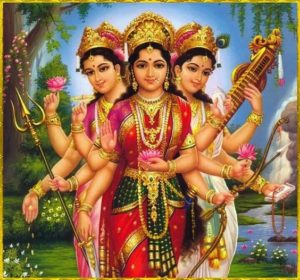
In Kerala and other places in India, the first three nights of worship are dedicated to Durga (the invincible), the next three to Lakshmi (Goddess of prosperity), and the final three to Sarasvati (Goddess of learning). Durga helps us to destroy and remove the negative tendencies in our minds and hearts, freeing us from the obstructions to our spiritual and material pursuits. Lakshmi helps us to cultivate positive qualities like compassion and devotion, and leads us towards both spiritual and material prosperity. Sarasvati assists us in attaining knowledge and wisdom, through the illumination of our consciousness. She aids in awakening sattva, the quality of purity, and the flow of prana, the vital breath. After removing inner and outer obstacles and cultivating prosperity through virtuous qualities, our devotion, service, and practice help us to attain a state of peace, bliss, and oneness.
Sarasvati-Lakshmi-Kali/Durga
In the Kali Kula (Kali school of worship) in northeastern India, Sarasvati is worshiped on the first three nights, followed by Lakshmi and then Kali/Durga on the last three. Sarasvati, Lakshmi, and Kali/Durga (Kali emerged from Durga) are also known as the consorts of Brahma, Vishnu, and Shiva. The Goddesses, therefore, provide the shakti to the cosmic processes of creation, preservation, and death/transformation, similar to their male counterparts. Consequently, worship in this manner is dedicated to the cycles of life and Mother nature, through birth, then sustenance, then death. Death is not a complete stop, but allows for the regeneration of energy into a new cycle once again.
9 Forms of Goddess
Throughout India, the nine nights of Navaratri are often dedicated to 9 different incarnations of Durga, allowing the worship of many different aspects of Shakti in a gradual evolution. You can read the stories and significance of these 9 goddesses here, or a more a brief introduction, here:
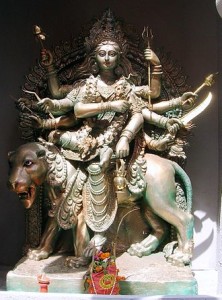 1. Shailputri
1. Shailputri
“Daughter of the mountain”; creative energy, muladhara (root chakra), awakening; Awaken your connection with Goddess today or initiate a new venture, calling on Shailputri for new beginnings.
2. Brahmacharini
The ascetic; tapas, discipline, devotion, strength, wisdom, creative abundance; Good day for fasting and meditation, connection with svadhistana (sacral chakra).
3. Chandraghanta
Warrioress; protection, courage, grace, manipura (solar plexus); Destroy your internal obstacles by offering them to Chandraghanta.
4. Kushmanda
Creatrix of the “cosmic egg”; strength, health, happiness, success, relationships; Connect with the vital Sun energy and the anahata (heart chakra) today.
5. Skandamata
“Mother of Skanda/Kartikeya”; motherly love, nourishment, protection, purity; Call on divine truth through the vishuddha (throat chakra), invoking Skandamata to lead you towards victory.
6. Katyayani
Warrioress who destroyed Mahishasura (the buffalo demon); victory, devotion, strength, removing obstacles; Meditate on these qualities of Goddess through the ajna chakra (third-eye) today.
7. Kalaratri
“Dark/black night,” representing a fierce form of Durga/Kali; darkness, death, surrender, dissolution of pain; Connecting with the sahasrara (crown chakra), remember that Divine Mother offers love, compassion, and many blessings even in hard times. Even in the midst of apparent darkness, and helps us to go beyond the boundaries of the material body-mind and connect with spirit.
8. Mahagauri
“Great white goddess”; detachment, purification, renewal, protection, virtue; Through detachment and devotion, we emerge purified, shining and radiant after surrendering in the dark night. Rejuvenative herbs and foods are good today.
9. Siddhidatri
Goddess of “siddhis”; magical, spiritual or mystic powers and blessings, fulfillment of desires, devotion, divine union; Invite Goddess to reveal her presence to you everywhere and in every moment.
Personal Practice Ideas for Navaratri
If possible, it is great to reduce our workload and gather with community at local temples or places of worship. We can also create a little time and space at home and conduct some personal practices to celebrate Goddess energy. Here are some ideas to do at home or with a group throughout the nine nights of Navaratri:
Altar
Create a sacred space, a Durga altar, or a Goddess altar. Even if you already have one, you can refresh it in some way or rearrange it specifically for Navaratri. Include images or statues of the Goddess(es) you have a relationship with. This could be according to one of the groups of forms above.
Invocation
Even if you don’t have much time, dedicate at least a few minutes each day to connecting with the Divine Mother in front of your altar.
Journal
Write in your journal about what qualities of Goddess you perceive and connect with. What aspects would you like to strengthen or to cultivate more deeply? Write any and all prayers and offer them to the form of Goddess that appeals to you.
Light
Offer light to illuminate Goddess’s power, helping her to shine more brightly into the world and your life. You can light a candle by the altar and keep it burning when you’re at home. You can even keep an electronic tealight on symbolically when you are away.
Flowers/Grains
Offer flowers or grains (even a small dish of dried rice) to celebrate Devi in the form of mother nature, fertility, the abundance of the harvest, and the cycle of life.
Offerings
Offer incense, bells, water, or food if you feel called, by placing it on the altar, or mentally offering it to Goddess throughout the day. You can also offer something symbolic of your own work or practice, whatever you have been cultivating for harvest through the year. In offering this you surrender the fruits of your efforts to the Divine Mother.
Fasting
Some people choose to fast in some variation, if this is something you have practiced before. This might include fasting during the day, fasting with only milk or fruit, or abstaining from alcohol and non-vegetarian foods during Navaratri.
Chanting
Chanting the Devi Mahatmyam, a verse to the Goddess, is a common practice during the nine-night festival. You can also chant another Goddess mantra or songs that are special to you and your relationship with Devi.
JAI MA DURGA!
Personal Vedic Astrology chart readings and forecasts are available Here.
Did you like Maha Navaratri 2016? Please Like, Comment and Share!
Save
Save
Save
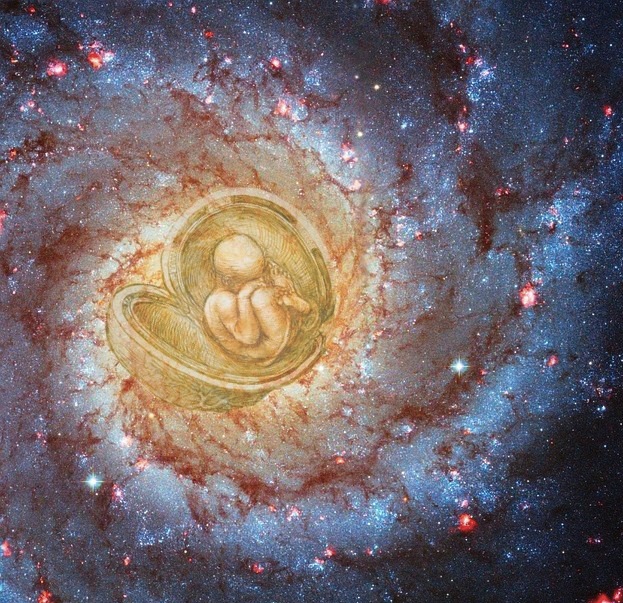
by Somya Devi | May 2, 2016 | Astrology, Conjunctions, Retrograde, Uncategorized
Friday, May 6th, 2016 brings the new Moon in Bharani nakshatra, the womb star, a portal of life and death. Bharani is one of the 27 divisions of the sky visited by the Moon each lunar cycle, and is known as “the bearer.” Its symbol is the yoni (the female reproductive organs), and its deity is Lord Yama, the god of death. This star brings the strong potential for death and rebirth this lunar cycle. (Side note… any Game of Thrones fans?) The dark Moon night is Thursday in most places, and is an excellent time to contemplate what in your life is ready for its death, or composting, and what seeds you are ready to nurture with your energetic womb medicine.
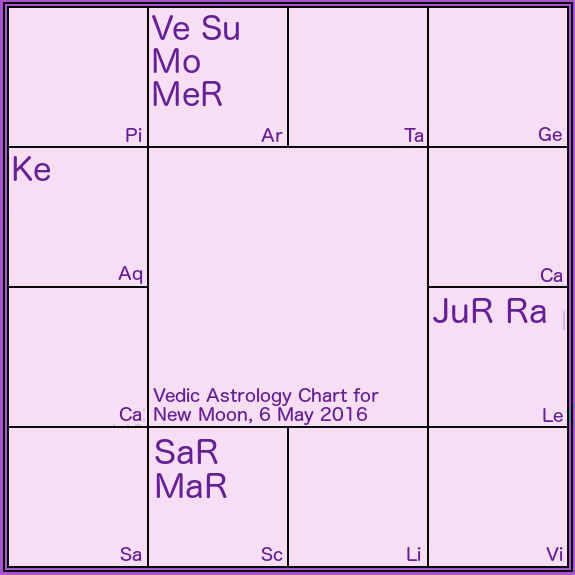 The new cycle begins at 12:29 P.D.T. on Friday, with Sun, Moon, and Venus all in Bharani nakshatra, which falls in the middle of sidereal Aries. This will bring out our creative and nurturing energy, as well as our sexuality and passion. Mars’ influence on Aries makes this is a very willful nakshatra, which will make us very headstrong this month. It also brings the courage and the will to purify ourselves and follow our hearts. Now is the time to birth your passions into being, and nurture what you want to see grow this season.
The new cycle begins at 12:29 P.D.T. on Friday, with Sun, Moon, and Venus all in Bharani nakshatra, which falls in the middle of sidereal Aries. This will bring out our creative and nurturing energy, as well as our sexuality and passion. Mars’ influence on Aries makes this is a very willful nakshatra, which will make us very headstrong this month. It also brings the courage and the will to purify ourselves and follow our hearts. Now is the time to birth your passions into being, and nurture what you want to see grow this season.
Bharani is also known as the “star of restraint,” due to Yama’s influence. “The bearer” is both the one who creates and nurtures, and the one who endures or bears hardships. Lord Yama relates to death as well as to spiritual discipline, which we often choose to undertake when the awareness of our ultimate death dawns in our consciousness. This is an excellent time to adopt and endure some self-discipline aimed at self-purification, as part of the process of nurturing your goals and creations.
You could synthesize these energies of Bharani by designing a new sadhana practice for yourself to support your goals, especially one that includes yogic regimens of self-restraint, such as a cleansing diet or a new exercise routine. With Sun exalted in Aries, we are compelled to purify ourselves, using Mars’ courageous energy to strengthen our health and our connection with source. It’s not too late for a spring cleanse (you may actually have more impetus to do one now than before). With Sun in Aries, we remember our inherent strength and connection, and our power to share that light by putting it into action. Aries gives us the courage to step into our power and shine our brightest.
 Since Jupiter and Rahu are both still in the Sun’s sign of Leo, this also adds potency to the heated ideological debates still happening in the U.S. political campaign. Jupiter directs his aspect onto Sun, Moon, Venus, and retrograde Mercury, all in Aries on this new Moon. Don’t be surprised if some of the passions being birthed right now are sprung from extremist philosophical convictions. Because Jupiter is retrograde, many people have recently had a change of heart around their belief systems, and because Rahu is joining him, many of the philosophies recently adopted are radical and revolutionary.
Since Jupiter and Rahu are both still in the Sun’s sign of Leo, this also adds potency to the heated ideological debates still happening in the U.S. political campaign. Jupiter directs his aspect onto Sun, Moon, Venus, and retrograde Mercury, all in Aries on this new Moon. Don’t be surprised if some of the passions being birthed right now are sprung from extremist philosophical convictions. Because Jupiter is retrograde, many people have recently had a change of heart around their belief systems, and because Rahu is joining him, many of the philosophies recently adopted are radical and revolutionary.
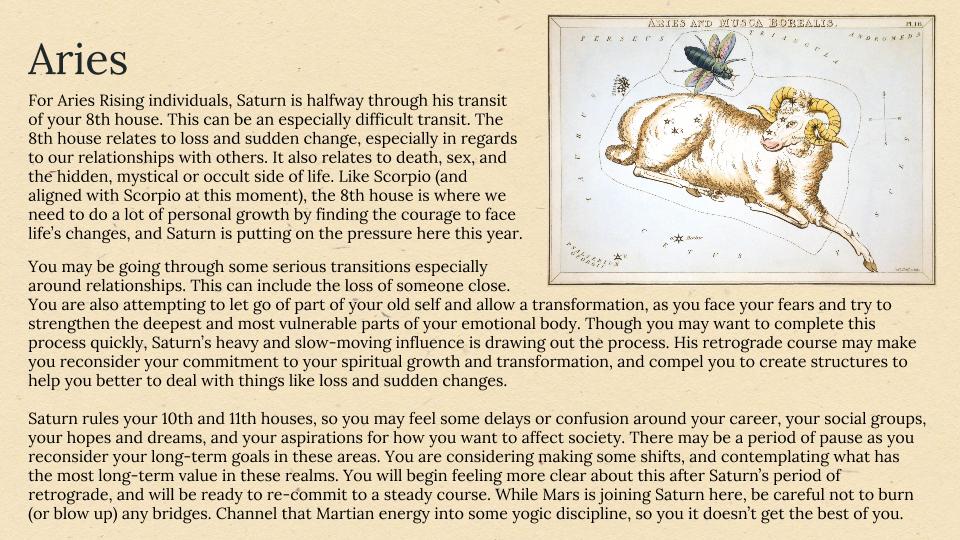 Saturn and Mars are also both in retrograde motion, joined in sidereal Scorpio. This has been causing more than a few disruptions, and has shaken us into awareness of our fragility and the sudden changes that seem to keep happening throughout life. Since this is the 8th house from this new Moon in Aries, this just adds to the transformative energy for death and rebirth offered in this cycle.
Saturn and Mars are also both in retrograde motion, joined in sidereal Scorpio. This has been causing more than a few disruptions, and has shaken us into awareness of our fragility and the sudden changes that seem to keep happening throughout life. Since this is the 8th house from this new Moon in Aries, this just adds to the transformative energy for death and rebirth offered in this cycle.
Mars and Saturn will be joined in Scorpio through most of the summer, which is an unusually long conjunction for these two planets. It could be challenging, as both Saturn and Mars help to teach us the hard lessons in life. This Saturn retrograde transit is showing us where in life are reevaluating our long-term goals, and Mars adds the explosive fire of transformation to this process.
Last but not least, Mercury is also in retrograde motion, and joins Sun, Moon and Venus in Aries on this new Moon. This means we have the chance to go back and finish some communication or correspondence that was not yet finalized. On the other hand, it can also mean that some of your Mercurial efforts get a bit jumbled or delayed (missed appointments or overlooked messages). If that’s the case, try to tap into the patience that retrograde Saturn is trying to teach (after all it’s only 3 more weeks). You can bring forward the best that these planets have to offer, by engaging in quiet meditation or service for Saturn, and self-discipline for #Mars. This can help you to replace fear, anxiety and anger with wisdom and courage.
To help you understand how this awesome lineup of planets is affecting your chart, I’m offering personal Vedic astrology chart readings with an extra emphasis on the retrograde planets’ effects in your life.
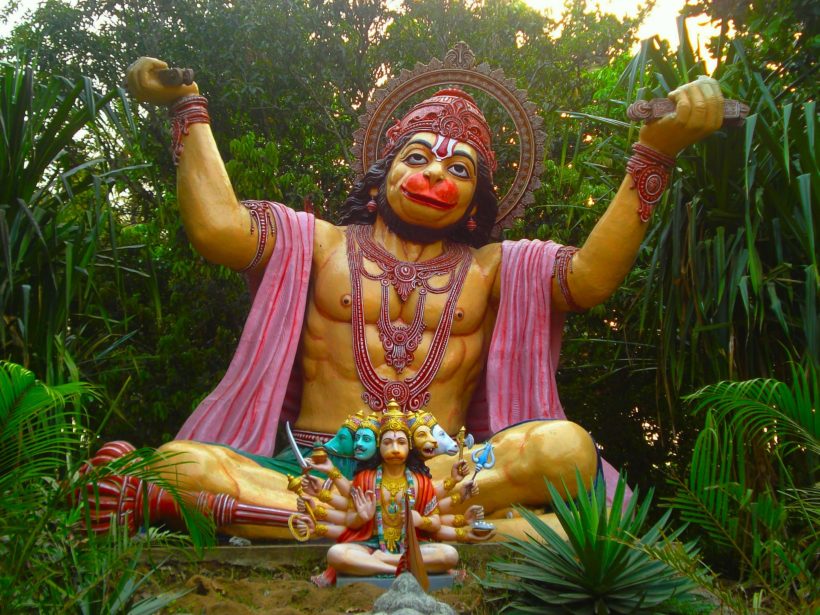
by Somya Devi | Apr 18, 2016 | Astrology, Conjunctions, Events, Holy Days, Retrograde, Uncategorized
It’s an auspicious full Moon and Hanuman Jayanti this week! This full Moon falls at 8 degrees of sidereal Libra, opposite the exalted sun in Aries, and brings the celebration of Hanuman Jayanti (the birth of Lord Hanuman!). In Vedic astrology, the sky is divided into 27 sections. These are constellations or stars called nakshatras, and there is one for each night of the moon’s transit in a lunar cycle (they were said to be the 27 wives of the Moon). The nakshatras are even more specific than the 12 major constellations we know from Western astrology. Each nakshatra has a special significance and brings a powerful energy that is related to both a Vedic deity and a planet.
 This full Moon will occur at 10:24 p.m. PDT this Thursday, April 21st, in the nakshatra called Swati, “the independent one.” The symbol of Swati is a young plant blowing in the wind. The energy of this star evokes our sense of independence, but also represents the struggle that we can feel while trying to assert our place in the world. Its deity is Vayu (wind personified), who is the father of Lord Hanuman, also associated with this star. Swati is related to the shadow planet Rahu, adding a deep psychological quality and offering the chance to tap into our hidden power (Rahu is often related to kundalini energy).
This full Moon will occur at 10:24 p.m. PDT this Thursday, April 21st, in the nakshatra called Swati, “the independent one.” The symbol of Swati is a young plant blowing in the wind. The energy of this star evokes our sense of independence, but also represents the struggle that we can feel while trying to assert our place in the world. Its deity is Vayu (wind personified), who is the father of Lord Hanuman, also associated with this star. Swati is related to the shadow planet Rahu, adding a deep psychological quality and offering the chance to tap into our hidden power (Rahu is often related to kundalini energy).
There is a large vata quality to this star, which can cause a restless mind. With the full Moon here, we may have a sense of our great internal potency, but feel a good deal of nervousness about it at the same time. We can ease our sense of agitation by channeling that energy into worship, and contemplating the qualities of Lord Hanuman. He demonstrates that even our restless monkey minds can be tamed through one-pointed focus on devotional service, such as he has. Swati is also the nakshatra where Saturn, the planet of service, reaches exaltation.
How fitting that this full Moon also brings the Hindu holiday Hanuman Jayanti! This is a time for celebrating Lord Hanuman’s divine qualities. Hanuman is the greatest devotee of Lord Ram, and exemplifies loving selfless service. He embodies many virtues, including service, strength, devotion, courage, humility, and morality. In some places, the celebration of Lord Hanuman’s birth will be even greater than that of Lord Rama’s (last week). This is because of the value we see in the qualities that arise in a devotee’s heart and mind through practicing love for one’s deity. These lead us into actions of love and service, and spread peace and happiness throughout the world.
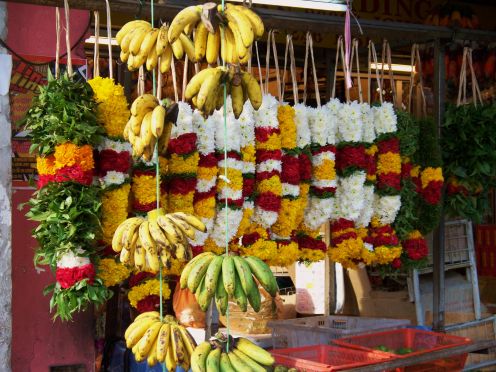 How can we celebrate Hanuman Jayanti? Begin at sunrise, if possible, because that is when Hanuman was born. It is customary to fast from sunrise until sunset on Hanuman’s birthday. You can offer him sweets, bananas, flowers, prasad, puja, or mantra. The Hanuman Chalisa is the supreme Hanuman mantra. Chant a few or many of these throughout the day. For times when you can’t do that, simply chanting the name Ram (aloud or silently) will also be a potent offering into the collective consciousness of prayer on this day. The power of prayer increases exponentially with more people joining in unison. You can also read passages from the Ramayana.
How can we celebrate Hanuman Jayanti? Begin at sunrise, if possible, because that is when Hanuman was born. It is customary to fast from sunrise until sunset on Hanuman’s birthday. You can offer him sweets, bananas, flowers, prasad, puja, or mantra. The Hanuman Chalisa is the supreme Hanuman mantra. Chant a few or many of these throughout the day. For times when you can’t do that, simply chanting the name Ram (aloud or silently) will also be a potent offering into the collective consciousness of prayer on this day. The power of prayer increases exponentially with more people joining in unison. You can also read passages from the Ramayana.
Many temples will be celebrating Hanuman Jayanti on the 21st (in North America), the actual Chaitra Purnima (the 15th moon phase of this lunar month, Chaitra), but some are hosting gatherings on the weekend to offer more devotees the chance to commune. (Note: In India, this year’s full Moon and Hanuman Jayanti falls on April 22nd.)
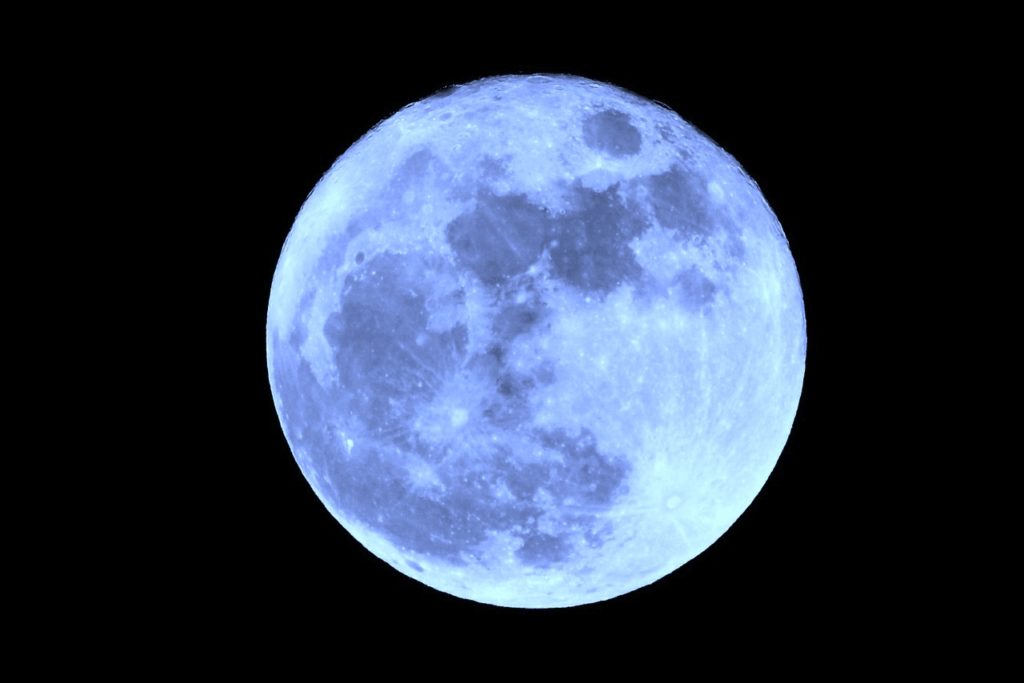 Other influences to be aware of this full Moon:
Other influences to be aware of this full Moon:
Moon is being lit from across the earth by an exalted Sun, who is now transiting Aries’ part of the sky. With sun in the powerful sign of Aries, ruled by Mars, we have the courage to share our light and our power, and to purify ourselves with the discipline of Mars and the inspiring energy of Sun. Purification can definitely include turning your attention onto your physical health this month. Now is a great time to reignite your exercise routine and do some dietary cleansing to strengthen your physical body. As yoginis know, the body is the vessel for the soul, so taking care of your temple will also create a purification of mind and heart, and a vibrancy of spirit. This placement also strongly supports cultivating some yogic discipline. The energy of the full Moon falling in Libra reminds us to find balance while pursuing energetic purification.
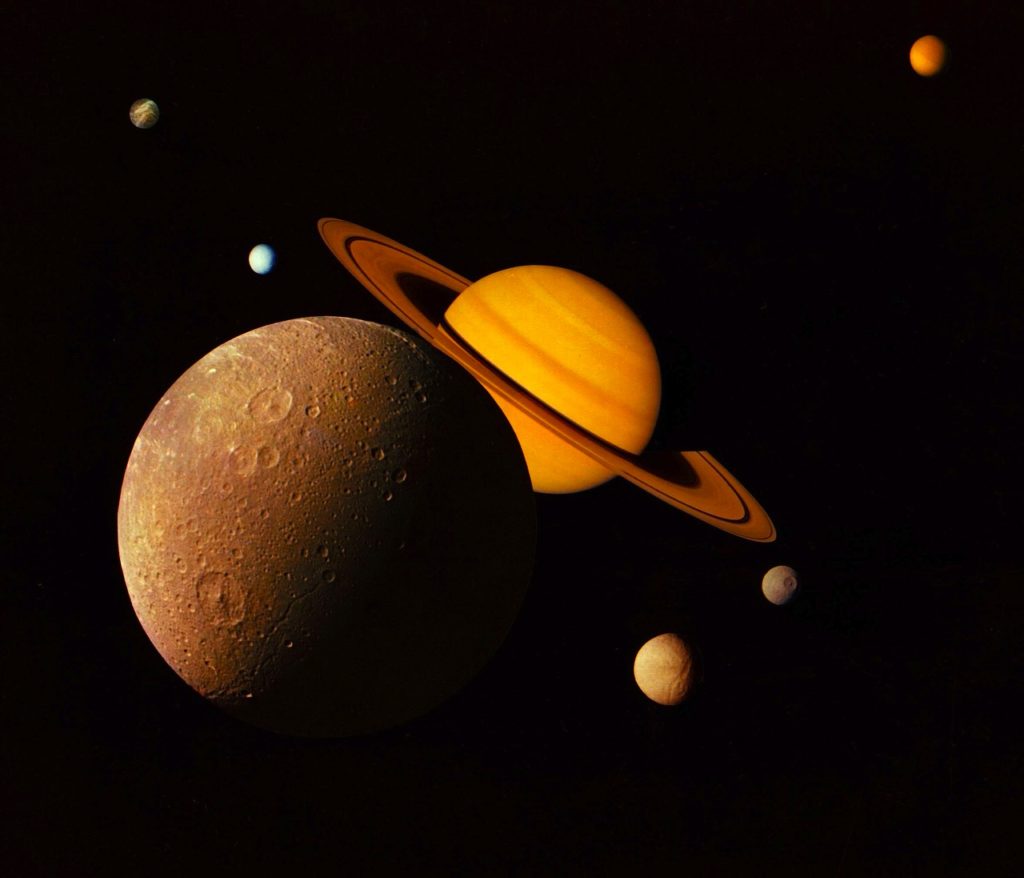 Expect some potential intensity, as well, because Aries’ ruler Mars has just turned retrograde, and is now headed back towards an also-retrograde Saturn (from our vantage point on Earth). Both are in sidereal Scorpio. This could create some conflicts, both internally and externally. Saturn puts on the pressure and tries to make us slow down, proceed with caution, and re-evaluate our commitment to long-term goals, especially around how we approach internal transformation. He urges us to seek enduring structure to support our deep-seated vulnerability. Mars, on the other hand, wants us to take courageous, warrior-like action, and immediately destroy anything that is standing in the way of overcoming our fears. The combination of these two is like pressing the gas and the brakes at the same time, creating a potentially explosive situation.
Expect some potential intensity, as well, because Aries’ ruler Mars has just turned retrograde, and is now headed back towards an also-retrograde Saturn (from our vantage point on Earth). Both are in sidereal Scorpio. This could create some conflicts, both internally and externally. Saturn puts on the pressure and tries to make us slow down, proceed with caution, and re-evaluate our commitment to long-term goals, especially around how we approach internal transformation. He urges us to seek enduring structure to support our deep-seated vulnerability. Mars, on the other hand, wants us to take courageous, warrior-like action, and immediately destroy anything that is standing in the way of overcoming our fears. The combination of these two is like pressing the gas and the brakes at the same time, creating a potentially explosive situation.
Rahu and retrograde Jupiter are still joined in Leo (you can see Jupiter there every night), and continue to foster a period of extremist beliefs on both personal and societal levels. Watch out for self-righteousness. For some good news, on the other hand, Venus is in his nakshatra of exaltation at the moment (Revati). This gives us the chance to elevate some of our earthly sensual desires into desires for spiritual upliftment and liberation from material focus. At the same time, if you have a tendency to escape reality or go overboard into dreamland, you may find yourself taking that to the extreme right now.

Vedic Astrology chart for Full Moon on April 21st/22nd 2016

by Somya Devi | Mar 21, 2016 | Astrology, Conjunctions, Eclipses, Events, Holy Days
A penumbral lunar eclipse will be visible from most places on earth this Wednesday, including North and South America (except Eastern Brazil), India, Asia, Australia, the Pacific, Antarctica and the Arctic. The greatest moment of the eclipse happens at 4:48am PDT on March 23rd, just before the peak of the Full Moon at 5:01am.
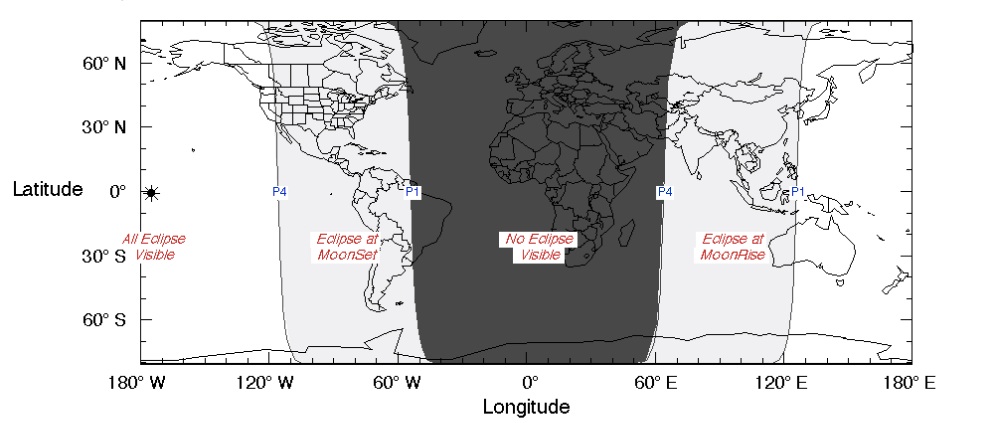
We’re now halfway through this lunar cycle, which began with a Total Solar Eclipse and a huge pileup of planets in sidereal Aquarius. I’ve heard from many people that this stirred up a lot of issues in their lives, including a lot of deep psychological work. The first eclipse brought forward our shadows around the dichotomy between universal service and our own self-empowerment and personal values, and pushed us to unearth limiting beliefs and negative patterns around the themes of the house that Aquarius is in our personal Vedic chart (download my Free E-Book with the Forecast for your Sign if you haven’t yet!).
The Full Moon point in a cycle is the time to reflect back on the energy that started us out and take a look at how to integrate that energy in a new way. This Full Moon falls in sidereal Virgo, just beyond the Aquarius-balancing sign of Leo. This compels us to look even further, beyond harmonizing the energy that was eclipsed, and into a transformative level. It pushes us to get really clear about the details of whatever shadow work came up for us around March 8th. We need to get down to the nitty-gritty and re-organize our patterns of thinking and behavior, and find some practical routines that will help us to move forward, free from the shadows that have arisen.
The eclipse occurs with the full Moon in the same Vedic sign where Rahu resides, Uttara Phalguni. This Vedic nakshatra bridges Leo and Virgo. This is a very powerful star for helping us to balance universal-love and self-love, which were areas that the solar eclipse challenged us to integrate better. Uttara Phalguni is a star of charity and generosity, ruled by the Sun, and brings forth an energy of leadership, courage, and care for society. It is also related to relaxation, reminding us that we must care for ourselves in order to be able to care for others. Its deity is Aryaman, a deva of friendship, companionship and kindness.
As Rahu’s shadow obscures the Moon in this sign during the Lunar Eclipse, we might feel cut off from these benevolent qualities, and may struggle to find contact with our emotional bodies. It is best not to eat or drink during the eclipse, and not to look at it directly. Instead, do practices like chanting or meditation, and call forth the highest lessons that the eclipse has to offer you. We could either fall into emotional confusion, or we could take this moment to consciously embrace emotional detachment, and step into a space of Virgoan practicality, as we examine the shadows brought forth by the eclipse.
The Mercury-ruled, down-to-earth sign of Virgo aims to give us a much needed sensibility to balance the intensity of our inflamed beliefs (resulting from Jupiter and Rahu in Leo). Watch out though — on the other side of the sky, Virgo’s ruler Mercury sits in combustion and debilitation, in close alignment with the Sun in sidereal Pisces. This could make us a little more steam-headed than usual (as Sun boils Mercury in Piscean waters!), and less on track with those details we so wish we could get organized. Remember that this eclipse cycle is part of a larger one that is running from now through mid-2017, so we will have more chances to get it right.
This lunar eclipse will drive you deeper into exploring the themes of the Aquarius-Leo house axis in your chart. It will be especially potent for anyone who has prominent planets or a rising sign in Uttara Phalguni nakshatra.*

This Full Moon also kicks off the Hindu holiday of “Holi.” In this sportive festival (much like a new year’s celebration), people throw colored powders at each other, as a way to playfully let go of any aggression held from the past year. It’s a time to forgive and start anew, coming just after the Equinox, a balancing point of the solar cycle. It is a fresh start for Mother Nature in the northern hemisphere (great time for a spring cleanse!). If you’re in a place where you can celebrate Holi, go out and playfully participate! Use this collective energy of renewal to help you with the transformative process thrust upon you by the eclipses!
Get ready for another compelling planetary motion later this week, when Saturn comes to a stop and then begins his Retrograde course from now through August. This will give us a final chance to do some deep work around our commitment to transformation, as Saturn’s last period of retrograde motion in Scorpio.
*I’m still offering a special Eclipse Reading Package to help you to navigate through this 1.5-year transit of Rahu and Ketu! You’ll get 3 personal readings around each of the 3 eclipse cycles during this period.

 Kala Saarpa Yoga
Kala Saarpa Yoga Thursday (North America) is both Dhanvantari Tryodashi (or Dhanvantari Jayanti, the birth of Lord Dhanvantari), and Dhanteras (a part of the Diwali festival). It is the thirteenth day of the waning Moon in the Vedic month of Ashwayuja. Lord Dhanvantari is known as the “father of Ayurveda” and the “physician of the Gods.” (Ayurveda is the system of natural medicine from India that is a sister science to yoga and Jyotish.) If you practice any healing tradition, especially Ayurveda, this is a good day to give thanks and call in auspicious blessings to your healing path or practice.
Thursday (North America) is both Dhanvantari Tryodashi (or Dhanvantari Jayanti, the birth of Lord Dhanvantari), and Dhanteras (a part of the Diwali festival). It is the thirteenth day of the waning Moon in the Vedic month of Ashwayuja. Lord Dhanvantari is known as the “father of Ayurveda” and the “physician of the Gods.” (Ayurveda is the system of natural medicine from India that is a sister science to yoga and Jyotish.) If you practice any healing tradition, especially Ayurveda, this is a good day to give thanks and call in auspicious blessings to your healing path or practice.















